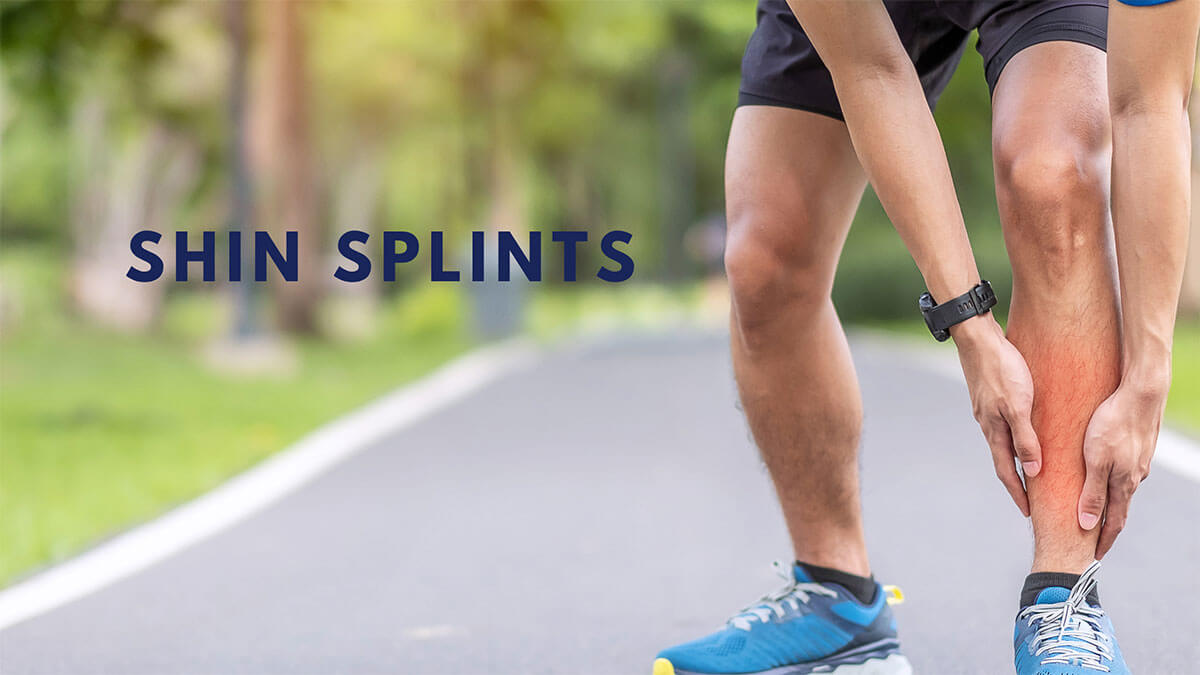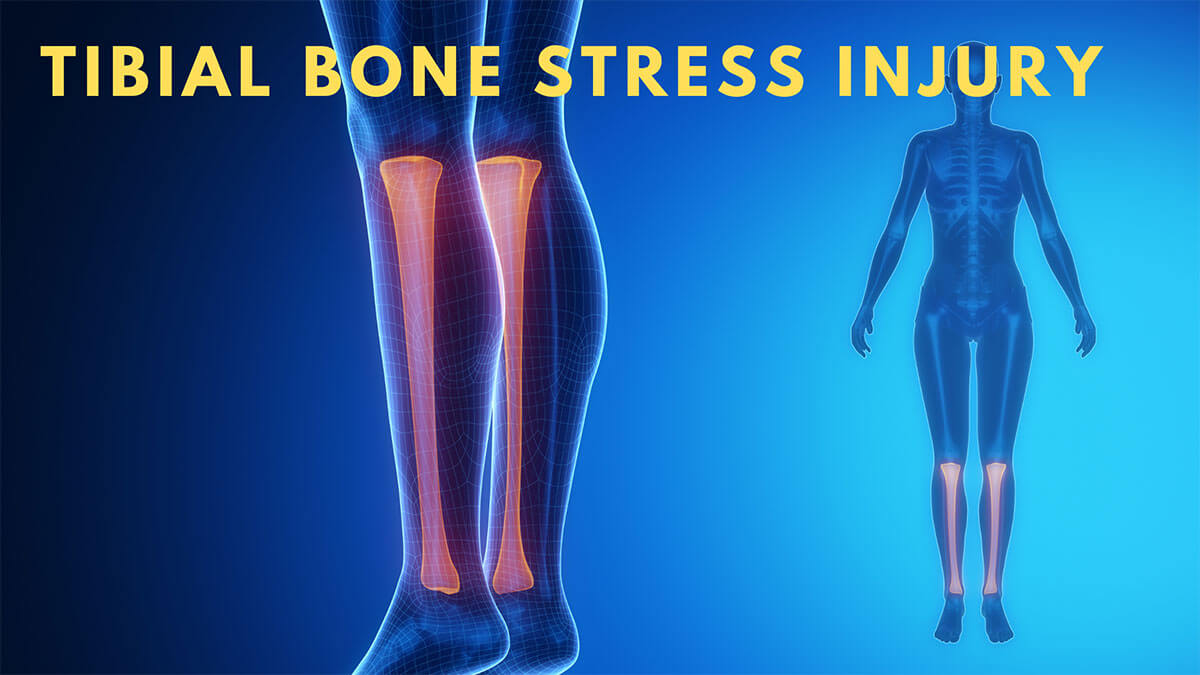As a runner, you may be familiar with all the different types of pain that can occur in your leg. From musculoskeletal problems like medial tibial stress syndrome (MTSS) and tibial bone stress injury (TBSI), to vascular issues like popliteal artery entrapment syndrome (PAES), to neurologic conditions like entrapment neuropathies, there are many potential causes of leg pain.
If you’re experiencing any type of leg pain, it’s important to get it checked out by a medical professional. Only they can determine the cause and recommend the appropriate treatment. In the meantime, here is some more information about some of the most common sources of runner’s leg pain:
Medial Tibial Stress Syndrome (Shin Splints)
 Medial tibial stress syndrome (also known as shin splints) is a condition caused by repetitive stress on the tibia (shinbone) and is one of the most common sources of leg pain in runners. Symptoms include pain and tenderness along the inner edge of the shinbone, swelling, and warmth over the affected area. Treatment typically involves rest, ice, compression, and elevation (RICE), as well as non-steroidal anti-inflammatory drugs (NSAIDs) to reduce inflammation. Most importantly, activity should be reduced to an appropriate level where pain has subsided. We are not proponents of strict activity cessation unless it is necessary.
Medial tibial stress syndrome (also known as shin splints) is a condition caused by repetitive stress on the tibia (shinbone) and is one of the most common sources of leg pain in runners. Symptoms include pain and tenderness along the inner edge of the shinbone, swelling, and warmth over the affected area. Treatment typically involves rest, ice, compression, and elevation (RICE), as well as non-steroidal anti-inflammatory drugs (NSAIDs) to reduce inflammation. Most importantly, activity should be reduced to an appropriate level where pain has subsided. We are not proponents of strict activity cessation unless it is necessary.
Medial tibial stress syndrome can arise for a variety of reasons including changes in activity intensity and/or frequency, worn-out shoes, running at a new incline, and there is a significant correlation to flatfeet (pes planus).
Diagnostic imaging is usually not required for medial tibial stress syndrome. Diagnosis is based on history from the patient and physical exam findings.
Tibial Bone Stress Injury
 Tibial bone stress injury is a condition caused by repetitive stress on the tibia bone and is less common than Medial tibial stress syndrome. The term tibial bone stress injury has replaced tibial bone stress fracture because this syndrome can occur in the setting of no true fracture. Risk factors for this injury include a change in exercise regimen with increased activity and intensity. It has also been suggested that worn-out shoes greater than 6 months of duration can also be a predisposing factor.
Tibial bone stress injury is a condition caused by repetitive stress on the tibia bone and is less common than Medial tibial stress syndrome. The term tibial bone stress injury has replaced tibial bone stress fracture because this syndrome can occur in the setting of no true fracture. Risk factors for this injury include a change in exercise regimen with increased activity and intensity. It has also been suggested that worn-out shoes greater than 6 months of duration can also be a predisposing factor.
Symptoms include localized pain and tenderness in the lower leg, swelling, warmth, and stiffness. Typically pain will be worse with weight-bearing and increased activities.
If x-rays are negative for fracture, an MRI should be considered to further evaluate the extent and confirm the injury.
This injury requires activity cessation and there is a very protracted recovery. Sometimes surgery is required in the setting of a delayed or non-union or if the patient is a high-level athlete and desires to get back to activities in a more expedited fashion.
Chronic Exertional Compartment Syndrome
 Chronic exertional compartment syndrome is a condition caused by increased pressure on the muscles within the calf due to exercise. Symptoms include tightness or cramping in the calf muscle, pain in the lower leg that worsens with exercise, and swelling in the lower leg. The reason for pain is that increased compartment pressure can lead to decreased oxygen content for muscle metabolism. Symptoms will be reproduced with activity, and they will subside completely once the activity has stopped. In more than 80% of cases, both legs can be affected.
Chronic exertional compartment syndrome is a condition caused by increased pressure on the muscles within the calf due to exercise. Symptoms include tightness or cramping in the calf muscle, pain in the lower leg that worsens with exercise, and swelling in the lower leg. The reason for pain is that increased compartment pressure can lead to decreased oxygen content for muscle metabolism. Symptoms will be reproduced with activity, and they will subside completely once the activity has stopped. In more than 80% of cases, both legs can be affected.
Interestingly, the examination is completely normal at rest.
Treatment typically involves stretching exercises to relieve muscle tightness, orthotics or shoe inserts to support the arch of the foot, and NSAIDs to reduce inflammation. Some studies have investigated adopting a forefoot strike pattern while running which can lead to some relief. Botox injections into the affected muscle groups can also be considered, however, this can lead to muscle weakness which may present problems for elite athletes. Unfortunately, conservative therapies may frequently fail. If this is the case, consideration for fasciotomy surgery may be required.
Popliteal Artery Entrapment Syndrome
 This is a condition where there is compression of the popliteal artery leading to decreased blood flow. This can cause pain in the back of the knee or calf muscles due to a lack of oxygenated blood supply. Surgery is the mainstay treatment for popliteal entrapment syndrome and involves releasing the adjacent soft tissue structures to relieve pressure on the artery.
This is a condition where there is compression of the popliteal artery leading to decreased blood flow. This can cause pain in the back of the knee or calf muscles due to a lack of oxygenated blood supply. Surgery is the mainstay treatment for popliteal entrapment syndrome and involves releasing the adjacent soft tissue structures to relieve pressure on the artery.
Entrapment Neuropathies
Entrapment neuropathies are conditions where there is compression or injury to a nerve leading to numbness, tingling, weakness, or pain in an arm or leg. There are multiple nerves in the lower extremity that can be involved. Typically symptoms can be present at rest and worsen with activity. Depending on which nerve is involved, there can also be weakness with muscle movement. Corticosteroid injections can be performed to decrease the inflammation of the nerve and also release the entrapped tissues irritating the nerve. If this fails, sometimes a surgical release of the nerve needs to be considered.
In conclusion, exertional leg pain can have a variety of causes, all of which should be evaluated by a healthcare professional. If left untreated, these conditions can lead to further injury and debilitating pain. Early diagnosis and treatment are essential for a successful outcome.

